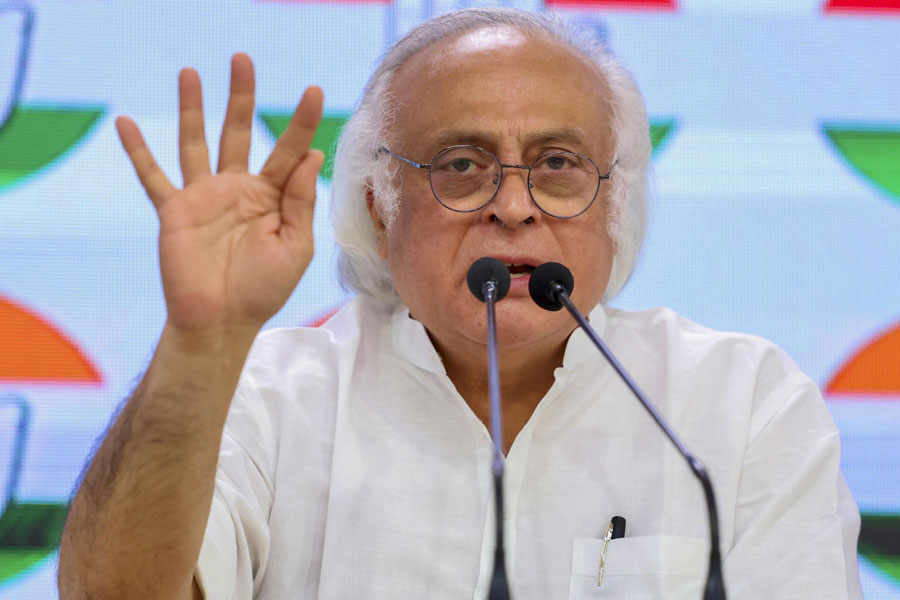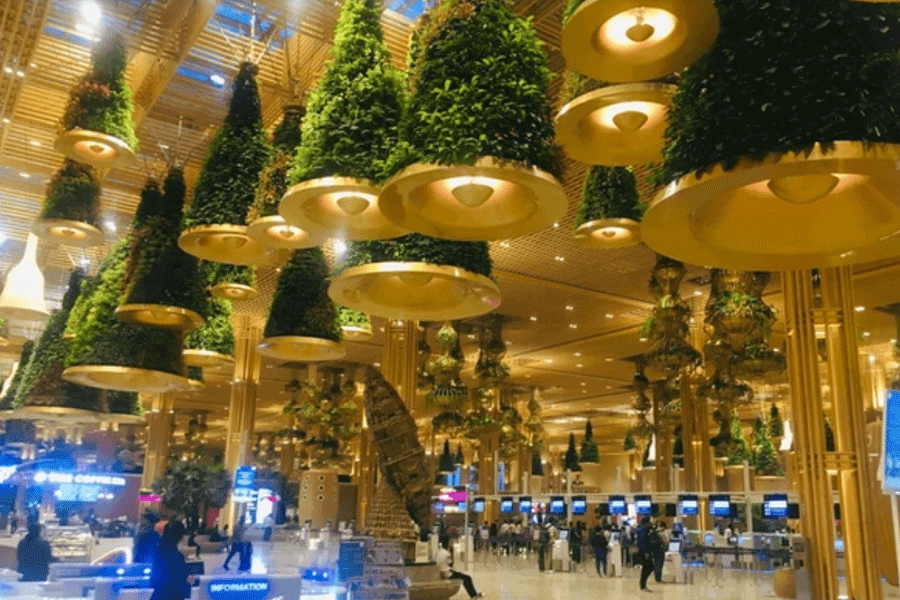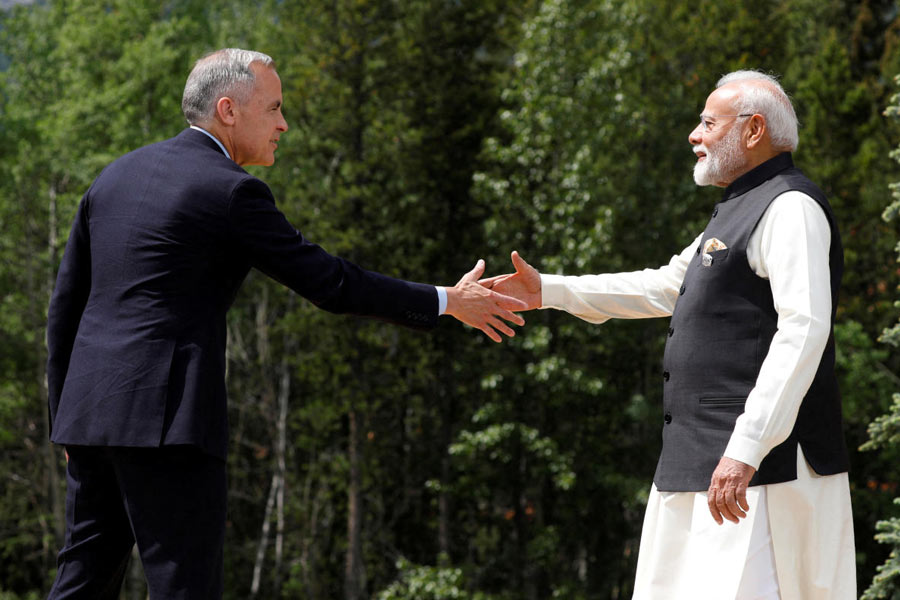 |
Bhubaneswar, June 26: The bamboo setum or the garden for bamboos inside the Medicinal Plant Garden (MPG) near Patrapada, on the outskirts of the city is a place for knowledge-based tourism. With 63 bamboos from all corners of the globe, the garden for common and rare bamboo species is set to revolutionise love for the plant among the people of the state.
The bamboo setum is developed inside a special enclosure of the MPG, which was inaugurated by chief minister Naveen Patnaik a month ago.
The story of bamboo is peculiar to India and Orissa’s economy. For example, the nation has got the second largest bamboo resource in the world, but the global market share of the bamboo-based product from India is merely 4 per cent. According to forest department sources, while the world market for bamboo is 10 billion dollars, China shares 50 per cent of the business. Orissa is one of the states with considerable forest cover.
Divisional forest officer (DFO) Jayanta Dash, of the city forest division, who is the administrative head of the Medicinal Plant Garden, said: “The nation pays Rs 10,000 crore every year on wood import, but the outflow of the foreign timber import can be stopped by planned economic utilisation of abundant bamboo resources in the country. Also global demand for wood shows a steady rise of 10 per cent every year. So, if can concentrate on quality bamboo production, then the foreign exchange earnings will also be more. Also as the constraints in wood availability leads to the search for a dependable and durable alternative, bamboo can have a bigger role of a global economic shift. The new centre will educate people on bamboo’s socio-economic role.”
The bamboos at the setum of the MPG is collected from different parts of the country and especially from the northeast as the region is home to many beautiful and economic viable species. “We have also collected species from China, Nepal, Myanmar, Thailand, Japan and Korea. In future we want to make the collection much bigger,” the DFO added.
Bijay Ram Das, retired director, soil conservation of the Orissa government, who is now working as a leading landscaping consultant to the forest department, has designed the bamboo setum and the entire MPG.
“The Patrapada area, which houses the 155 acre of the medicinal garden, was an abundant limestone quarry. We have deposited top soil from other regions and created an artificial landscape altogether for the plants. The bamboo setum was also planned on a deeper quarry, which was reclaimed with careful soil treatment and then the bamboo plants were planted. The middle portion is developed as a pavement and waterbody.”
The retired soil conservation official also said: “There is more land left for further development and addition of other species of bamboos to the rich collection of the MPG.”
Ranger R.K. Nayak of Khandagiri range said, “There is an artificial fountain attached to the waterbody and there are sitting arrangements for visitors to the special bamboo section. Students of the forestry science, trainee forest officials, botany and taxonomy students and even small school students are coming in large numbers.”
Indian bamboos grow in a wide range of habitats and altitudes ranging from sea level to over 3,000 metres. One hundred and twenty eight species of bamboos exist in India. Some of these, however, are herbarium species, imported from outside and only a few specimen or culms may be available.
The ecological importance of bamboo is also very important. Nayak said: “As one of the most productive and fastest growing plant, bamboos have high rate of biomass production and carbon sequestration potential. One hectare of bamboo stand absorbs about 17 tonnes of carbon in a year. Dry weight accumulation of a species Bambusa bamboos species at the age of eight years is 285 tonnes for hectare, which is on par with 10-year-old plantation of fast growing specie like casuarina (292 tonnes per hectare) and eucalyptus (255 tonnes per hectare).”
The carbon captured by bamboo is sequestered for a long time as durable bamboo products like handicraft, furniture, shoot processing, bamboo charcoal, housing and construction, primary processing of the bamboo timber at village level, grading of the fibre and industrial processing.
Some major ways through which it can be done are: edible shoot harvesting, tiny cottage industry like ‘agarbati’-making, ice cream, crackers, sticks, fishing rods, new generation wood substitutes and bamboo boards. It can also be used of its medicinal values.
While coming to the bamboo setum one has to pass though the MPG which has a beautiful central garden of 350 varieties of herbal qualities. However, some tree species are also planted in separated plots outside the central garden.
Meera Swain, a faculty working at a city-based engineering college, and visitor to the bamboo setum said: “I never knew that such a nice place is there near the city. The statue of ‘Charak Muni’ or the father of modern Ayurvedic medicine is at the centre of the MPG main garden. While walking down towards the other part of the park, a stone-carved medicine-making equipment is displaced at the centre. At a distance, two nice water lilies form a beautiful sight.”
The MPG will soon have a knowledge centre disseminating data on the common healing qualities of the plants, tips regarding their identification and Ayurvedic properties so that people can use them in their daily life.
Also the traditional healers are always encouraging people to use herbal medicine for their zero content of toxic chemicals and pesticides.
“For the knowledge centre we have decided to recruit a taxonomist from a local university, who knows the classification of plants and their place in the plant kingdom and an Ayurvedic doctor, who is well-acquainted with the medicinal properties of the plant species,” said the DFO.
Regarding the proposed data interpretation centre in Ayurveda and the qualities of the medicinal plants, the forest officials said: “In future a visitor can come to the knowledge centre and through an interactive computer aided environment, know the details of the plant and its importance for a specific disease.”
The ranger added: “The medicinal plant garden has 350 species, but of them 102 tree species of medicinal plants are planted in 102 plots to create small patches of medicinal plant gene pool. The rest of the plants are either climbers, shrubs or herbs. More than 300 visitors are come daily to the garden including 150 are morning workers and those who attend regular yoga practice and training session inside the park. We hope with the addition of the knowledge centre in the garden the number will group.”










